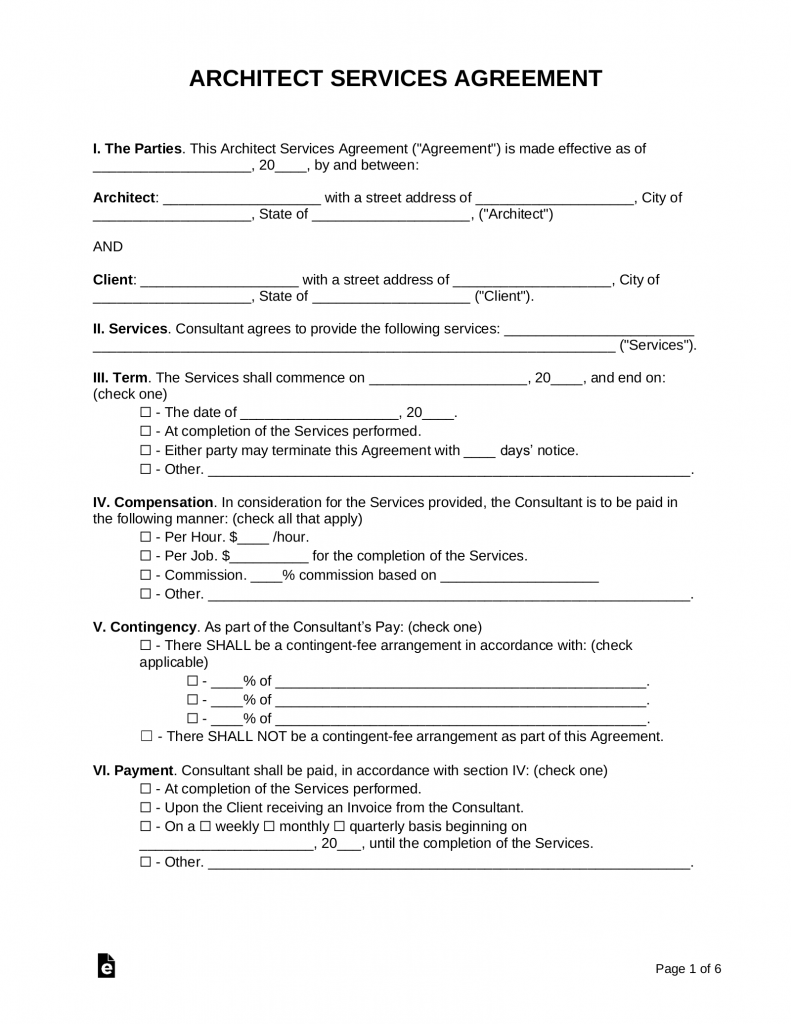Architect Retainer Agreement
Architects are hired to make our dreams into reality, creating beautiful and functional structures that meet both our aesthetic and practical needs. To ensure that the architect and the client are on the same page, a retainer agreement is often used. This agreement sets out the terms and conditions of the project and ensures that both parties are aware of their responsibilities. In this article, we will explore the ins and outs of architect retainer agreements and why they are essential for anyone planning to engage with an architect.
The Pain Points
Have you ever worked with an architect who went above budget, missed deadlines, or didn't come up with a design you liked? All these are common pain points of working with an architect, and the best way to address them is by using a retainer agreement. This agreement helps establish mutual trust and transparency in the project's planning and implementation, clears up any misunderstanding, and ensures that both the client and the architect have a clear understanding of their roles and responsibilities.
The Target of Architect Retainer Agreement
The main target of an architect retainer agreement is to ensure that both the client and the architect understand the project's scope, the fee schedules, payment terms, and the deliverables expected. Additionally, the retainer agreement sets out the timelines, process, quality control measures, and other relevant matters such as change orders, available discounts, and termination clauses. All these help minimize the risk of disputes, litigation, and ensure a smoother project execution process.
Summary of Main Points
Architect retainer agreements are crucial for successful projects, with various benefits such as mutual trust, transparency, and clear communication. Pain points such as missed deadlines, budget overshoots, and design disagreements can all be addressed by using this agreement to ensure both the architect and client share the same goals and understand their roles. In the following sections, we will dive deeper into the specifics of architect retainer agreements.
The Target of Architect Retainer Agreement
As we've mentioned, the main target of an architect retainer agreement is to promote mutual understanding between the architect and client. However, there's more to this agreement than simply setting expectations. Personal experience shows that architect retainer agreements form an essential component of any project, acting as a roadmap that steers both parties towards the desired goal, while also clarifying any issues that arise along the way.

Architect retainer agreements also help to manage expectations and ensure that clients get value for their money. By outlining the project's scope and delivering expected, costs are clear, and clients understand the investment they are making. More importantly, the agreement acts as a shield that protects both parties in case of a dispute, providing a mechanism of dispute resolution and minimizing legal exposure.
Key Considerations and Points
Before signing the retainer agreement, it is essential to consider several factors. These include the scope of the project, the fee and payment terms, and the deliverables expected. Others include the timeline, quality control measures, and communication channels. Attention should also be given to change orders and the termination clauses. By ensuring you read and understand the agreement, you can minimize the risk of legal disputes and achieve a smooth and successful project outcome.

Frequently Asked Questions
Q: What is in an architect retainer agreement?
A: An architect retainer agreement outlines the project's scope, deliverables, timeline, fee and payment terms, change orders, quality control measures, and termination clauses.
Q: Why is an architect retainer agreement necessary?
A: An architect retainer agreement is essential as it ensures mutual understanding, protects parties from legal disputes, and promotes transparent communication.
Q: Who prepares an architect retainer agreement?
A: Architect retainer agreements can be prepared by either the architect or the client. However, it is essential to have a legal professional review the document before signing it.
Q: Can a client terminate an architect retainer agreement?
A: Yes, a client can terminate an architect retainer agreement, but it is essential to understand the implications, such as cost implications, before doing so.
Conclusion of Architect Retainer Agreement
Architect retainer agreements are essential documents in any project's planning and execution, promoting mutual trust, transparency, and communication. By outlining the project's scope, fees, timelines, and deliverables, they help manage expectations, minimize the risk of disputes, and promote a smooth project outcome. Therefore, it is advisable to review, understand and sign an architect retainer agreement before commencing any project to ensure the project's success.
Gallery
Retainer Agreement | Retainer Agreement, Retainers, Agreement

Photo Credit by: bing.com / agreement retainer
Free Architect Consultant Agreement - PDF | Word – EForms

Photo Credit by: bing.com / agreement eforms odt
Sample Interior Design Proposal Template - 10+ Free Documents In PDF, Word
Photo Credit by: bing.com / interior proposal template contract sample templates aia pdf agreement documents format construction form write contracts ms estimate details business word
FREE 10+ Sample Retainer Agreement Templates In PDF

Photo Credit by: bing.com / retainer agreement sample blank
Profroma ARCHITECT - OWNER AGREEMENT

Photo Credit by: bing.com / agreement architect owner architects proforma